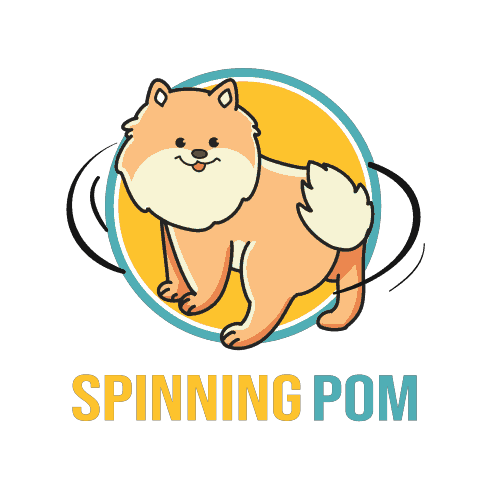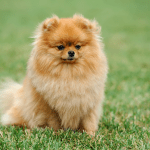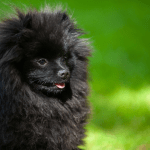Having had our youngest Pomeranian spayed, I thought it would be a great idea to share valuable advice on dog spaying and how to take good care of your Pom after surgery.
So, what is Pomeranian spaying aftercare all about? You’ll give your Pom special care until she fully recovers. You can’t feed her or give her water until the effects of the anesthetics pass. You’ll have to check the incision site two times a day, make sure she’s wearing a cone, and avoid bathing her, preferably for 14 days
Fourteen days does sound absurdly long, but there is a good reason behind it. Here, I will discuss how you can take care of your Pomeranian after surgery, what to expect about its recovery process, and how to recognize any complications if they occur.
Important Tips for Successful Pomeranian Spaying Aftercare
If you ever had any doubts about how you can handle your Pomeranian’s post-surgery, this information can help.
Most dogs and cats need an average of 14 days from their incision to heal completely; that’s about the same time it takes us to recover after surgery. Even though restricting your Pom for 14 days sounds crazy, it’s still important that you do it.
Of course, it’s possible for your dog to heal quicker than that, but it’s wiser to be cautious than hasty, particularly in this situation. If your dog doesn’t heal on time, and you let them roam free, you risk serious health complications that could render their ability to function properly.
Their sutures can open, which can expose their organs completely.
Avoid Bathing Your Pomeranian Until She Heals
Every pet needs a bath; this one is obvious. But when you hear you shouldn’t bathe them, let alone for 14 days, it sounds absurd. I know how difficult it is to try and not bathe my pet; she can smell a lot. Maybe she pooped or peed in the carrier and she desperately needs one.
But there is one major problem that your vet has probably warned you about, and that is bacteria. If you bathe your Pom after she was spayed, you introduce the incision site to bacteria. This is something you should definitely avoid.
Most importantly, do not touch the affected area with shampoo or get it anywhere near it. This is crucial. Wait for their incision to heal before you decide to bathe them completely. If you are uncertain if the incision has recovered, consult your vet, your pet might have healed faster than expected. But, check with your vet first before you make any sudden decisions.
Keep Checking Your Dog’s Incision Area
Check for any abnormalities in the incision area, like infections, inflammation, smell, or anything that may seem out of the ordinary. Remember how the incision looked like the first day after surgery and make sure it stays that way. It should be healthy without swelling, redness, or discharge.
If you don’t know how to check her area, this is how you can do it. Get your little Pom to roll over and expose their tummy. If you see a small number of red areas, bruising, or swelling, it’s normal. But, there shouldn’t be any dramatic changes in their tummy.
If you notice any of these symptoms, take her to the vet immediately.
Your Dog Must Be Wearing a Cone At All Times Post Surgery
Pets must avoid scratching themselves at all costs. The incision will be incredibly itchy, and for them, avoiding not to scratch themselves is almost impossible. So, wearing a cone is one of the most important things to do.
You must prevent your pet from hurting their incision area. At first, they will definitely hate it, and it’s restrictive and uncomfortable. But, after a couple of days, they will quickly get the hang of it. They will even grow accustomed to it.
Nevertheless, you should still keep your Pomeranian under direct supervision. In other words, while you’re cooking, cleaning, hanging around at home, you should always pay attention to them and make sure they don’t ruin the cone.
It’s actually quite interesting how fast they can chew and bite the sutures when you aren’t looking.
No Running, Playing, or Going for a Walk After Surgery
It doesn’t matter how old or young your Pomeranian is; spaying aftercare is all about paying attention to their health.
This means you have to restrict them from playing outside, running, or going for walks. This is crucial since moving too much, or stretching can slow down the recovery process and open up the incision area, which can potentially cause swelling.
Plus, letting them walk around the grass or a field will leave their incision vulnerable to infections, and since bathing them is out of the question, the infection could get worse.
If your pet is way too energetic and you wonder how you can let them spend all their energy, then you can leave them in a small room inside the house where they can walk around as much as they’d like.
This way, you will restrict your dog from getting near infections until it completely recovers from the surgery, in most cases, for 14 days.
Pay Attention to What and How Much Your Dog Eats
Keeping dietary management is another important thing to have in mind when taking care of your dog that just had surgery. It’s normal for pets post-surgery to have reduced metabolism, but it’s still important to feed the high-quality dog food.
So, you have to be careful your Pomeranian eats well to get back to a healthy weight. Depending on how old your dog is or how energetic it is, you will probably have to either increase or decrease their calorie intake. That can be determined by your vet.
Possible Complications and Risks That Can Occur
Luckily for all of us, complications and risks of spaying are very rare. Since these are extremely common surgeries, they have been perfected over the years, and a vet who is familiar with the procedure can easily oversee it.
Even though complications and risks are rare, they can still happen. Here is what you can expect to happen after surgery:
- Leakage of urine
- Incision opening-up
- Post-surgery trauma
- Infection
- Complications from the anesthetics
- Extreme blood loss (for animals that have heat, are pregnant, or a pyometra during surgery)
- Partial removal of the uterus or ovary
If any of these complications do happen, the vet will immediately notify you. If you notice the area has been infected after you’ve taken your dog home, you can return her to the vet for further checkups.
Quick Summary
After your Pom has had surgery, you have to take good care of it for two weeks straight, no matter how long it seems. It’s important that you restrict all of their activities that could potentially be dangerous. Since the incision takes up to 14 days to completely heal, you have to make sure your Pom has everything it needs.
Your Pomeranian will be on anesthetics for the first day, but after the anesthetics pass, the real work begins. For a successful post-surgery recovery, there are plenty of things you should look out for. Your dog has to wear the cone, can’t bathe, and can’t scratch the area. If you notice any complications, take them to the vet immediately.





